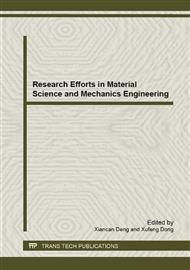p.130
p.137
p.142
p.147
p.152
p.158
p.164
p.169
p.175
Theoretical Analysis of Surface Waves on Liquid Jets in Crossflows with Deformation
Abstract:
Liquid jets in cross air flows are widely used and play an important role in propulsion systems, such as ramjet combustors. Surface waves on the liquid jets in gaseous crossflows have been observed in numerous experiments. Especially for lower gas Webber number, liquid jets breaks up due to the surface waves. However compared with injecting into gas coaxial flow, liquid jet will be deformed in crossflow due to the transverse aerodynamic force. Deformation of jet is investigated by analyzing stress force equilibrium of the cross-section. Though linear instability analysis, dispersion relation and growth rate of surface waves of liquid jet with deformation were derived. According to the present theoretical analysis, the cross-section shape can be deformed to stable ellipse only if the gas velocity was lower than 9m/s for 1mm diameter jet. The maximum growth rate of disturbances takes place at wave number 0.7 approximately, and it will decrease with increasing the jet diameter. The range of instable wave number will expand and the most instable wave number will grow for the deformed jets.
Info:
Periodical:
Pages:
152-157
Citation:
Online since:
April 2013
Authors:
Price:
Сopyright:
© 2013 Trans Tech Publications Ltd. All Rights Reserved
Share:
Citation:


